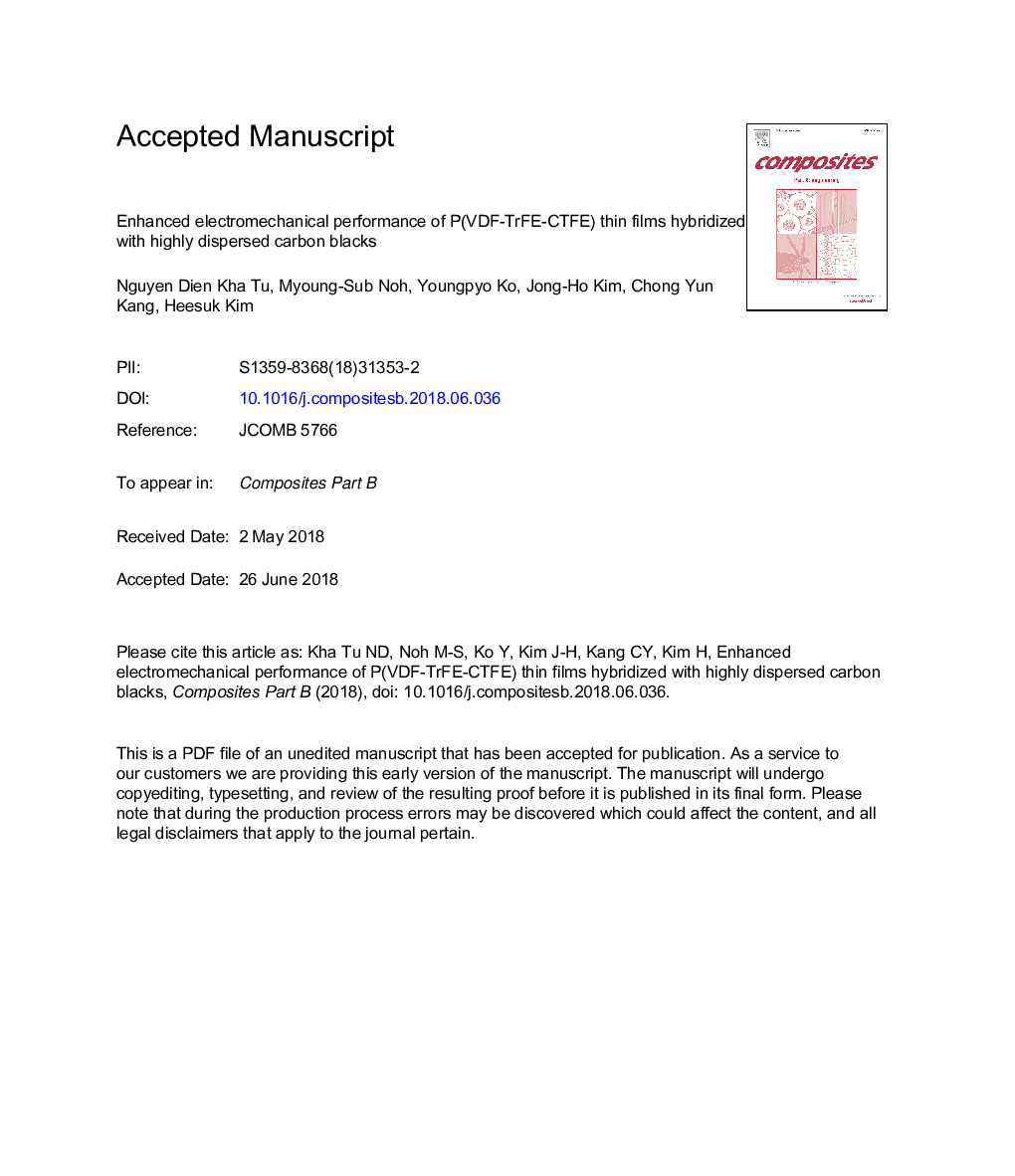| Article ID | Journal | Published Year | Pages | File Type |
|---|---|---|---|---|
| 7211789 | Composites Part B: Engineering | 2018 | 32 Pages |
Abstract
The fluoride-based electrostrictive terpolymers are attractive in electromechanical applications. To obtain high electromechanical performance, the terpolymers are hybridized with various fillers such as carbon materials. However, the previous hybrid films have been fabricated with thickness of 20-100â¯Î¼m due to poor dispersion of the fillers, indicating that these electrostrictive films require high driving voltages of more than 200â¯V. Herein, we have demonstrated the electrostrictive P(VDF-TrFE-CTFE) thin film hybridized with highly dispersed carbon blacks (CB). The CBs were chemically oxidized to improve the dispersion in the polymer matrix, thus leading to a successful fabrication of the oxidized CB/P(VDF-TrFE-CTFE) hybrid films with 8â¯Î¼m thickness using solution casting method. The P(VDF-TrFE-CTFE) thin film with 2.75â¯wt% oxidized CB shows 1.6 fold increased dielectric constant and maximum polarization with low loss factor compared to the pure terpolymer. These enhancements of the 8â¯Î¼m thick hybrid film enable to yield useful mechanical output at low driving voltages below 100â¯V. To evaluate the electromechanical performance of hybrid thin films, a unimorph cantilever was fabricated. With a low applied voltage of 90â¯V, the cantilever based on P(VDF-TrFE-CTFE) thin film with 2.75â¯wt% oxidized CB produces a displacement twice as high as that of the pure terpolymer. These results provide the first feasibility study of electrostrictive composites for practical applications, particularly human-related applications requiring a low driving voltage.
Related Topics
Physical Sciences and Engineering
Engineering
Engineering (General)
Authors
Nguyen Dien Kha Tu, Myoung-Sub Noh, Youngpyo Ko, Jong-Ho Kim, Chong Yun Kang, Heesuk Kim,
